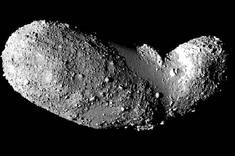
For the next month, the bright asteroid Juno will be visible in the eastern part of the constellation Virgo.
Credit: Starry Night software
Most of us have played the computer game “Asteroids” at some point in our lives, but how many have actually observed a real asteroid in the sky?
Video games and sci-fi movies give the impression that the asteroid belt is a celestial rock pile crammed with dangerous objects. The reality is quite different.
Beginning in 1800, astronomers have discovered thousands of tiny astronomical bodies much smaller than the planets, mostly orbiting in a broad belt located between the orbits of Mars and Jupiter. [Photos: Asteroids in Deep Space ]
The largest is 596-mile-wide (959 kilometers) Ceres , which has recently been reclassified as a dwarf planet and is the only denizen of the asteroid belt known to be spherical in shape. Other asteroids are mostly half Ceres’ size or smaller, and roughly potato-shaped.
Juno fits that latter description. This space rock, which was discovered in 1804, measures 200 by 165 by 125 miles (320 by 267 by 200 km). It’s the 11th-largest asteroid and is about the size of West Virginia. Juno reached opposition to the sun this week — meaning it’s on the opposite side of the sky from Earth’s star — and is around magnitude 10, so it’s visible in binoculars.

0 of 10 questions complete
Juno is currently located in the eastern end of the constellation Virgo. Remember that, in the sky, east and west are reversed from their orientation on Earth; east in the sky is closest to the eastern horizon — to the left in the Northern Hemisphere. At opposition on Tuesday night (April 26), Juno was 2.30 astronomical units (AU) from Earth, and 3.28 AU from the sun. (One AU is the distance from Earth to the sun — about 93 million miles, or 150 million km.)
Juno can be found to the northeast of the bright star Spica, about halfway between two 4th-magnitude stars, 109 and Tau Virginis. The labeled position in the chart is where Juno will be located on Wednesday (April 27) and the dots mark its position at five-day intervals after that, on May 2, 7, 12, 17, 22 and 27.

0 of 10 questions complete
The best way to identify Juno is to make a detailed chart of the area using a program like Starry Night or SkySafari. In a telescope, you will actually be able to see Juno move after about 10 minutes against the background stars.
By locating and observing an asteroid like Juno, you will begin to understand how tiny asteroids are, and the vast distances between them. At present, the nearest sizable asteroid to Juno is Nemesis, which is 0.44 AU distant, equivalent to 41 million miles (66 million km). This makes it clear why space probes to the outer planets have no problem navigating through the asteroid belt. Most of the time, standing on any one asteroid, you would need binoculars to spot the nearest asteroid.
This article was provided to Space.com bySimulation Curriculum , the leader in space science curriculum solutions and the makers of Starry Night and SkySafari . Follow Starry Night on Twitter @StarryNightEdu . Follow us @Spacedotcom , Facebook and Google+ . Original article onSpace.com .


Comments are closed.